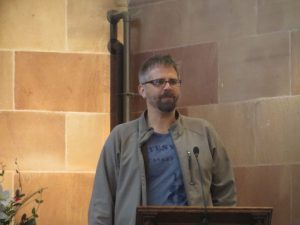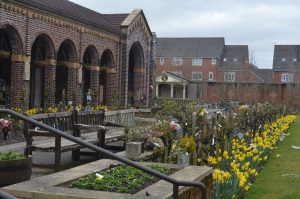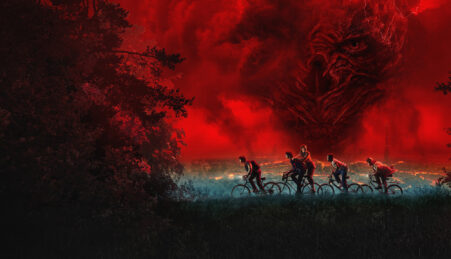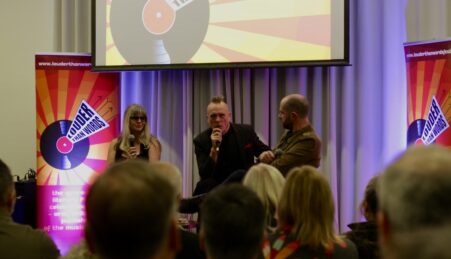
By Daniel J Broadley
Following the success of the first instalment of ‘Encountering Corpses’ in 2014, Manchester Metropolitan University’s (Manchester Met) Humanities in Public (HiP) Festival has resurrected the event for an open discussion on all things to do with the dead.
This time, the event took place in the Manchester crematorium, HiP Festival Co-Ordinator, Helen Darby saying:
“It might sound gruesome to some but it isn’t about death, or not just death. A lot of brilliant work is being done around death and death acceptance.
 This work is about the materiality of the human body. Not that you will die, and your consciousness end or go elsewhere, but that your material will remain. This body, that you measure, chastise, build up, tattoo, feed, starve, neglect, take for granted, worship… It will be left, passive and alone, for others to take care of. Other hands will lift it, transport it and, ultimately, dispose of it.”
This work is about the materiality of the human body. Not that you will die, and your consciousness end or go elsewhere, but that your material will remain. This body, that you measure, chastise, build up, tattoo, feed, starve, neglect, take for granted, worship… It will be left, passive and alone, for others to take care of. Other hands will lift it, transport it and, ultimately, dispose of it.”
She added, “It is worth discussion and contemplation. Buddhists meditate on this and find a loss of ego. I find community and the importance of care. We carry each other, or we lie where we fall.”
Manchester Met Professor of Human Geography Craig Young opened the conference before introducing the first panel. Dr John Troyer, of the Centre for Death and Society and University of Bath, opened the first discussion by focusing on radical life extension through bio-material exchange. Or, in simpler terms, organ donation. This is a practice that was widely rejected in the 1950s but that has now become more accepted. With 3D printing an ever-growing technology, Dr Troyer says 3D printed organs may not be a fantasy for much longer. He then focused on aging and how Google are funding Calico, a project dedicated to slowing the aging process.
Dr Trish Green, of the Hull York Medical School, then took the floor to discuss anatomical bequeathal. This is the donation of the whole body, not just organs, for the purpose of medical research and education. Dr Julie Seymour Senior Lecturer in Medical Sociology at Hull York Medical School, elaborated on this by talking about the Medical School Anatomy Unit. She focused on the process new medical students go through when encountering their first body:
“There’s a focus on professionalism in their training. It’s done in a way that they recognise the body as a person but also being able to manage it as an object for their anatomical procedure.”
She went on to say that new medical students are told to treat their donated bodies as their first patient, therefore humanising their learning base.
After a quick lunch break, plenary speaker, Carla Valentine of the Barts Pathology Museum took to the stage. Carla studies the relationship between humans and human remains, from looking at medieval obsessions and Victorian experiments to modern sanitation. Carla is a huge advocate for using human remains for education and research, a topic she explores in her Remains To Be Seen project.
She said, “There is something valuable about seeing human specimens. They can help us understand  something we may not otherwise be able to understand. For example, the fractured skull of a child may help us understand child abuse.
something we may not otherwise be able to understand. For example, the fractured skull of a child may help us understand child abuse.
I’m optimistic about public display becoming as open as it was in the 19th century.”
Carla went on to say we cannot make presumptions about people’s reactions to human specimens. Some people, she said, would be outraged over human fetus specimens being put on display. However, she said she once met a woman who had had a miscarriage who was fascinated by them, her point being that we cannot dictate how people may or may not react to something, which is reflected in the government’s intention to soon regulate public displays.
Research Fellow from the University of Central Lancashire Dr Jonathan Westaway began the final part of the conference. He gave a presentation called ‘Mountain of Memory, Landscapes of Loss’ in which he discussed the lost bodies of climbers and mountaineers. It is estimated there are over 200 bodies on Mount Everest that may never be recovered.
Dr Ruth Penfold-Mounce, Lecturer in Sociology at the University of York, gave the penultimate talk. She spoke about how celebrities still live on after they die. For example, Michael Jackson still makes over a hundred million dollars a year. Forbes even have a separate top rich list for dead celebrities, topped by the likes of Jackson and Elvis. In addition to this, celebrities are also still owned, after they die, by The Authentic Brands Group. Audrey Hepburn is still in chocolate adverts, Marilyn Monroe is in Coca Cola ads and James Dean, from beyond the grave, is still advertising jeans. The final section of the presentation was about how celebrities are sometimes used as scapegoats, the public saying what they like about them, for example, regarding Heath Ledger and his prescription drug use.
 The final speaker was Dr Gemma Angel of University of College London who spoke about the history and anthropology of the European tattoo and the medical museum collections of human remains.
The final speaker was Dr Gemma Angel of University of College London who spoke about the history and anthropology of the European tattoo and the medical museum collections of human remains.
The theme for the next strand of the Humanities in Public festival is ‘World’. For more information, click here.









Leave a reply